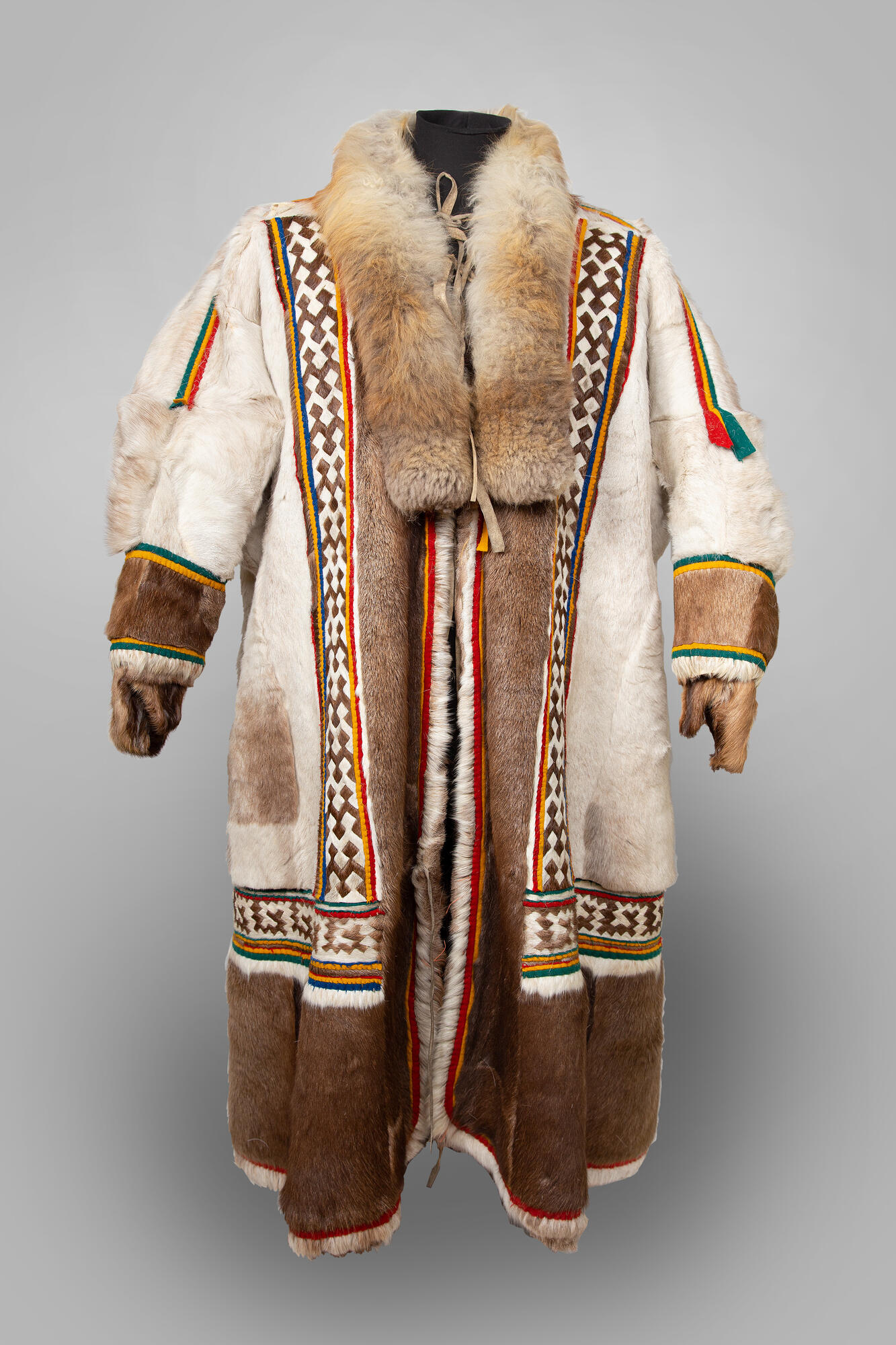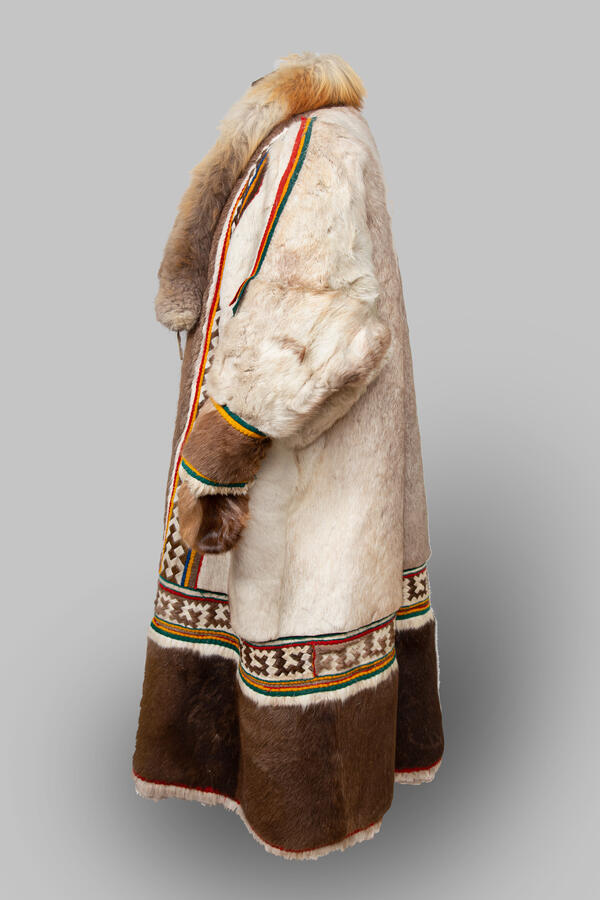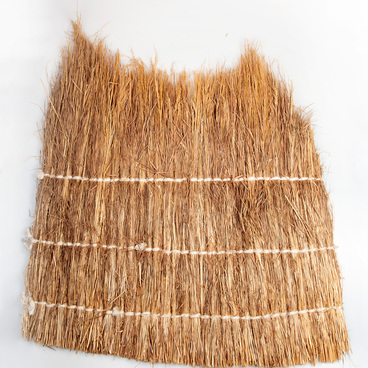A yagushka, or panitsa, is a type of the traditional Nenets women’s clothing. In winter, it is sewn from fur, and in summer — from bright cloth. Unlike a men’s malitsa, the yagushka has an opening in front. The two main types of panitsa differ in design, decoration and trimming techniques. Usually, it takes four summer deer hides to make one yagushka, the same number of autumn hides for lining, and one hide for the collar.
The upper part of the panitsa, from the shoulders to the waist, is sewn from pieces of squirrel, beaver and fox fur. Craftswomen twisted strips of fur with inserts made from multi-colored cloth and use them to decorate the seams. The ends of these patches hang loosely on the chest, back and sleeves, embellishing the clothes. The sleeves of the yagushka are straight, wide at the shoulder and tapering to the wrist. The upper part of the sleeve is sewn together with the shoulder part of the bodice, so a yagushka has no seams on the shoulders. In this type of clothing, all seams are horizontal, and the needlewomen begin to sew this type of clothes from above.
The hem of the yagushka is sewn separately. The lower part of the garment consists of several horizontal stripes of deer and dog fur, and there are cloth inserts in between. The pattern is usually 4–5 cm wide. Various traditional patterns can be used in one yagushka: “deer antlers”, “fox elbows”, and “heads”. Each pattern has its sacred meaning. Triangles are often depicted on women’s clothing — this is a symbol of the Nenets dwelling, the chum, which is traditionally set up by women.
The lining of the yagushka is sewn with fur inside. Usually it is not sewn to the yagushka, but simply put on under it. The second type of yagushka is sewn entirely from reindeer fur in the vertical direction; the collar is made from the tails of Arctic and red foxes. Festive women’s clothing is richly decorated with a sewn-in ornament of white and dark colors made of the hard pile from a deer’s lower leg. The shoulders, sides and cuffs also get decorated with a layer of colored cloth. Craftswomen embroider clothes with beads, metal rings and colored ribbons. A yagushka is complemented by mittens and a warm hood, which fit tightly or are sewn to clothes. Nenets women wear a yagushka with a bright braided belt, with the right front half on top of the left one.
The upper part of the panitsa, from the shoulders to the waist, is sewn from pieces of squirrel, beaver and fox fur. Craftswomen twisted strips of fur with inserts made from multi-colored cloth and use them to decorate the seams. The ends of these patches hang loosely on the chest, back and sleeves, embellishing the clothes. The sleeves of the yagushka are straight, wide at the shoulder and tapering to the wrist. The upper part of the sleeve is sewn together with the shoulder part of the bodice, so a yagushka has no seams on the shoulders. In this type of clothing, all seams are horizontal, and the needlewomen begin to sew this type of clothes from above.
The hem of the yagushka is sewn separately. The lower part of the garment consists of several horizontal stripes of deer and dog fur, and there are cloth inserts in between. The pattern is usually 4–5 cm wide. Various traditional patterns can be used in one yagushka: “deer antlers”, “fox elbows”, and “heads”. Each pattern has its sacred meaning. Triangles are often depicted on women’s clothing — this is a symbol of the Nenets dwelling, the chum, which is traditionally set up by women.
The lining of the yagushka is sewn with fur inside. Usually it is not sewn to the yagushka, but simply put on under it. The second type of yagushka is sewn entirely from reindeer fur in the vertical direction; the collar is made from the tails of Arctic and red foxes. Festive women’s clothing is richly decorated with a sewn-in ornament of white and dark colors made of the hard pile from a deer’s lower leg. The shoulders, sides and cuffs also get decorated with a layer of colored cloth. Craftswomen embroider clothes with beads, metal rings and colored ribbons. A yagushka is complemented by mittens and a warm hood, which fit tightly or are sewn to clothes. Nenets women wear a yagushka with a bright braided belt, with the right front half on top of the left one.





